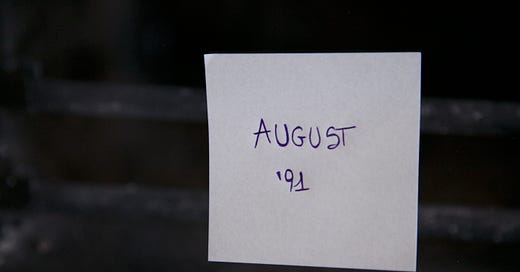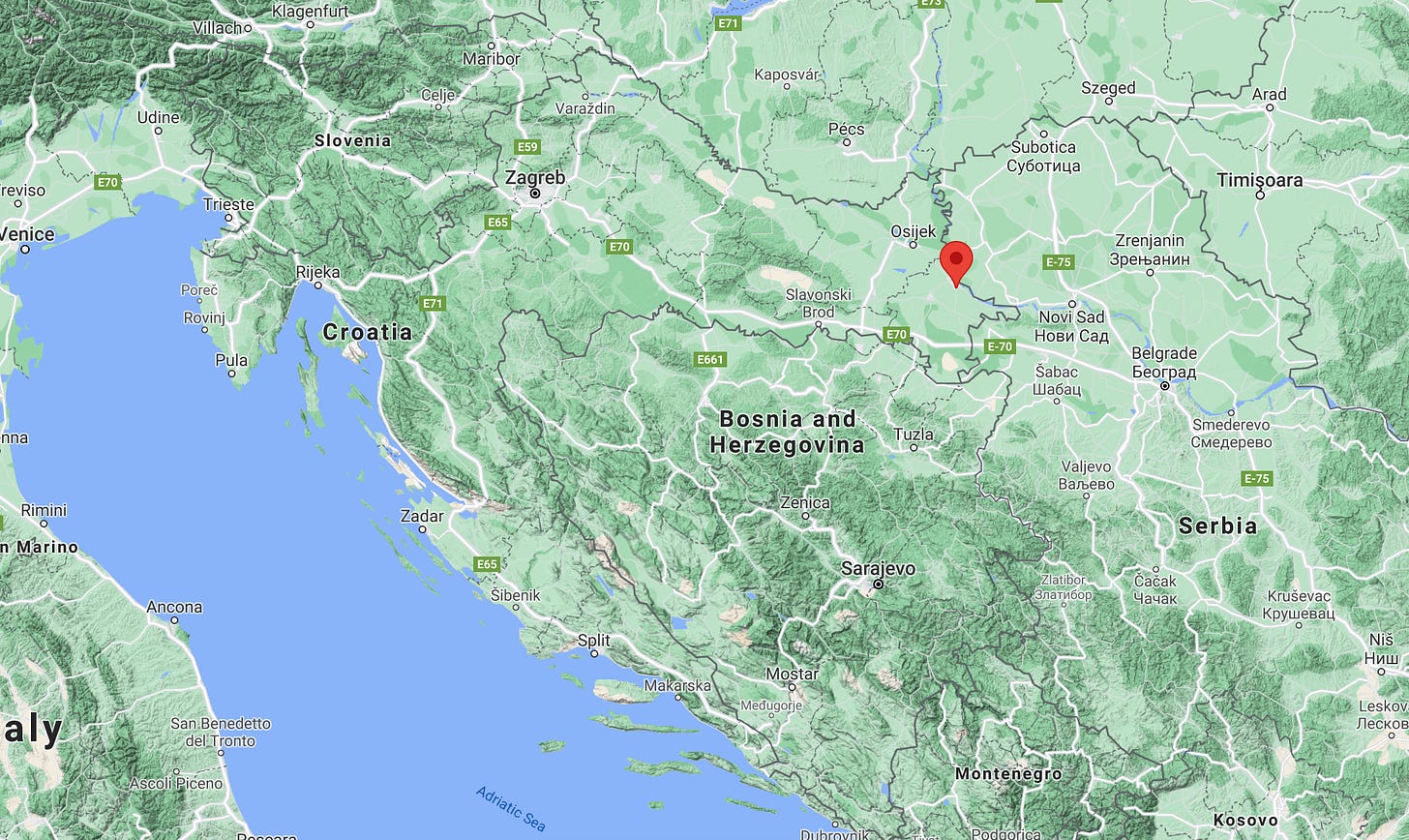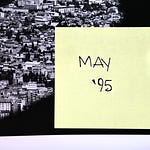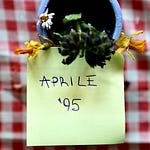It is August 1991.
Croatia is experiencing an eventful summer.
Since July, the Yugoslav People’s Army (JNA) has been providing operational support to the Republic of Serbian Krajina’s rebels, who are conquering village after village, city after city [you can listen to the latest episode of BarBalkans - Podcast here].
The next target is Vukovar, on the border with Serbia.
Meanwhile, the Croatian President, Franjo Tuđman, does not want to give up his defensive and victimizing strategy.
The Croatian disaster
The unstoppable Serbian advance in Croatia has several explanations.
For many months Serbo-Croatian rebels have been exhausting the Croatian National Guard with ambushes, shootings and bloody clashes in Krajina and Slavonia.
The Ram Plan to annex the territories claimed by Greater Serbia - through the federal Army and paramilitary groups - has been designed in Belgrade since February.
Unlike Slovenia, the JNA had plenty of time to empty the Territorial Defense’ arms depots and now the Croatian National Guard has very few weapons.
Focused on promoting peace between Belgrade and Ljubljana, the Western diplomatic services have never paid much attention to Croatia.
Last but not least, President Tuđman has put all his cards on the strategy of non-provocation of the federal Army, in order to present Croatia as the victim of an assault.
All these factors combined together lead Zagreb at the edge of a cliff at the beginning of August.
To be fair, Macedonian mediator Vasil Tupurkovski manages to broker a truce (on behalf of Europe) with the rebels in Krajina and those of the Serbian Autonomous Oblast of Slavonia.
It is August 3.
Nevertheless, only four days later, the beginning of the ceasefire is greeted by Serbian cannonade in Saborsko, a few kilometers from Bosnia and Herzegovina.
On August 15, the vice is tightened around Okučani, with the conquest of the Novska-Nova Gradiška motorway.
Zagreb is only 130 kilometers away.
Columns of disbanded Croatian soldiers cross the cornfields, singing old Ustasha hymns. They try to get excited and forget that they are fighting against a real army.
In contrast, they only have shoulder-fired missiles and armored trucks and buses with metal plates.
Tuđman’s purely defensive tactic is proving disastrous. There is no need to provoke the federal Army, because the JNA is already free to do what it wants in Croatia.
In August the Croatian President visits the war front only once and he even blames his officers - who asked for more ammunition - for using too many bullets.
But public opinion is increasingly tougher and tougher on him and, in the long run, Tuđman is pushed to reconsider his strategy of prudence at all costs.
On August 22 he issues an ultimatum to the Yugoslav People’s Army and the Presidency of Yugoslavia: if they will not put an end to the aggression, he will order a general mobilization.
However, 125 thousand refugees flee to Zagreb and abroad (Italy, Germany, Austria and Hungary).
Three days before the Serbian offensive was launched on Vukovar.
August 19. The siege of Vukovar
Vuk, as wolf.
Vár, as fortress.
Vukovar stands on the banks of the Danube, where the Vuka river flows into the great watercourse. A natural border, which divides two strips of land and two conflicting peoples.
Vukovar is a border town, an industrial harbor on the Danube’s Croatian bank. But just beyond the river you can see Serbia.
‘The Wolf Fortress’ is also the gateway to Slavonia. It stands in a strategic position, in the middle of a network of Serbo-Croatian villages.
This is a strange city. Lulled by an Hapsburg atmosphere, it does not sense the threat until the last minute.
There are 84 thousand inhabitants, evenly divided: the Croats are the 44 percent, the Serbs the 36 percent and the remaining 20 percent is represented by Czechs, Hungarians and other ethnic groups.
The urban core is cosmopolitan and the mixed marriages are not even news.
But a different feeling of revenge has grown in the suburbs, among the Bosnian Serb minority immigrated in 1945 and replaced the German colony (that was expelled because of pro-Nazi sentiment).
Nobody, neither in Vukovar nor in Zagreb, is realizing that the door to Slavonia is about to be torn down.
The federal Army takes care of this task.
On August 19 Vukovar is under siege.
The attack does not end with the immediate capture of the city - as the Serbs hoped - because the Croatian disbanded soldiers from the surrounding territories has gathered here.
More than a thousand volunteers support them in turning the city into a defense rampart.
However, Serbs make it a symbol to be conquered at any cost. Not only for strategic reasons, but above all to galvanize pro-Serbian public opinion.
Civilians have to secure themselves in bunkers and cellars. They suffer from hunger, cold and diseases for a time that seems endless.
Only because of the brutality shown by the federal Army in Vukovar, politicians in Brussels awake from the illusion of a united Yugoslavia.
In a joint Declaration signed by the twelve Foreign Ministers of the European Community (EEC), the «illegal use of the Yugoslav People’s Army and of irregular Serbian forces» in Vukovar is condemned. But also «possible border changes taken by force».
The Serbian government in Belgrade cannot tolerate the intervention of the EEC, seen as a humiliating abuse.
And it begins to take possession of the Yugoslav heritage.
Serbian politicians compare this Declaration to Stalin’s famous diktat to Tito in 1948, which led to the Socialist Federal Republic’s non-alignment during the Cold War.
But in 1991 the Yugoslav War has heated up and the Federation no longer exists.
And Vukovar has not seen the worst yet.
If you liked this article, you can spread this parallel journey and the free weekly newsletter on social media:
You can also give a gift subscription to whoever you want. Don’t let this virtual trip to the Balkans get lost!
Here is the archive of BarBalkans - Podcast:



















Share this post